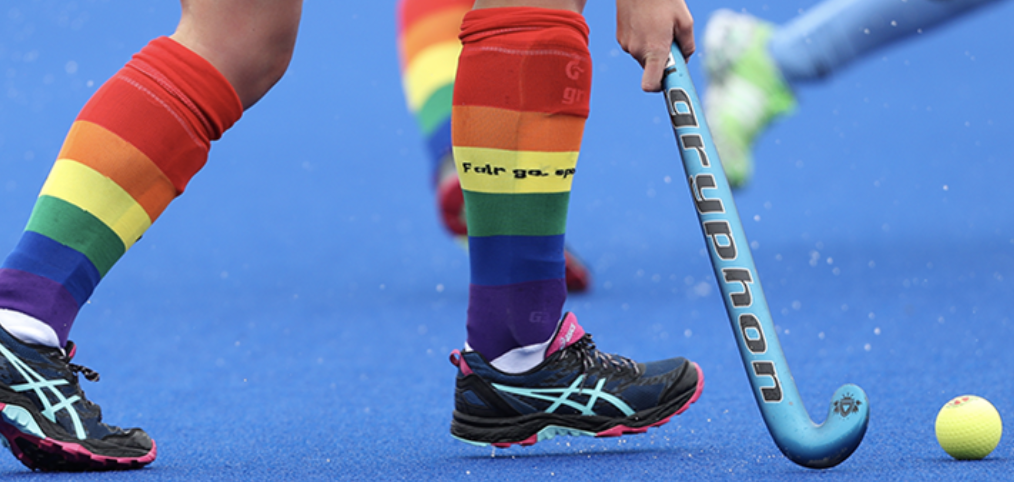Cricket is one of the most popular team sports in the world. Given the increase in participation and viewership across more countries in the past few decades, it is safe to say that the sport is growing significantly in prominence. One of the most discussed areas of concern and focus regarding the sport’s growth is its inclusivity. That is, how the sport can be more open and accessible to diverse categories of people regardless of age, gender, race, or physical condition.

To be candid, cricket has grown considerably to be an inclusive sport in a few areas over the years. For example, when the sport started in Australia, England, and most other nations, it was an exclusively men’s sport. Today, the sport includes a more diverse section of society, including women, children, and individuals with physical and mental disabilities.
It is also worth noting that several programs have been designed to enhance inclusivity in the sport, especially to address the needs of persons with disabilities. However, despite the tremendous efforts made thus far to make cricket an inclusive sport, it is still difficult to conclude that opportunities for people with disabilities to participate in it and most other sports are not limited.
Hence, there is a need to concentrate on finding more ways to make it a more inclusive sport. This will help present people with equal access to resources and opportunities to be proud players of the prestigious sport on every level, regardless of physical restrictions or other biases.
What is Inclusion?
Inclusion or inclusivity means providing equal ground for opportunities to everyone regarding a particular subject, especially those at risk of exclusion. This will involve providing the needed infrastructures, resources, and training to level the playing field for such sidelined people or groups, making participation easier.

Inclusivity in Sports
Our society is widely diverse, from differences in physical abilities to the increased intermingling of races and cultures and the acceptance of new ideas and concepts. This diversity extends to sports. Hence, there can be challenges and barriers to providing equal opportunities for participation for everyone. Inclusion in sports, then, would be the idea of breaking down these barriers so that everyone will have equal opportunity to participate in sports, regardless of their various statuses or condition.
Consideration of individuals with physical disabilities is a prominent area of concern in the topic of sports inclusion. It is true that these Individuals confront numerous challenges and, as a result, have less favorable experiences when it comes to sports. Some of these challenges may be due to a lack of opportunities, supportive organizations, and enough facilities and equipment to participate in the sport of their liking.
As a result, inclusivity is more than just a buzzword. It is a concept and approach towards designing a healthy environment in sports by making sports events and activities more accessible for all, both non-disabled and people with disabilities. This requires forethought, extra effort, and substantial resources channeled toward creating inclusive sporting events and facilities for all to encourage unrestricted participation in sports.
Inclusion in sports is allowing people of all abilities, genders, races, and backgrounds to participate in sports activities. It is about creating an environment where everyone feels welcome and valued, regardless of their differences. Inclusion in sports promotes diversity and breaks down barriers that may exist in society. It allows individuals to connect and bond over a shared love for sports, regardless of their circumstances.
Inclusive sports programs allow individuals with disabilities to participate in sports and physical activities, essential for their physical and mental well-being. Inclusion in sports is not only beneficial for individuals with disabilities but also for able-bodied individuals. It helps break down stereotypes and promotes understanding and acceptance of people with disabilities.
Inclusion in sports can be achieved in various ways, such as by modifying the game’s rules, providing adaptive equipment, creating a welcoming environment, and training coaches and staff to be inclusive. Inclusive sports programs can also be designed to accommodate individuals with different abilities, such as wheelchair basketball or deaf-friendly sports programs.
Inclusion in sports is not only about providing equal opportunities for all individuals but also about creating a sense of community and belonging. Inclusive sports programs promote teamwork, respect, and empathy, essential life skills that can be applied beyond the sports field. It is a powerful way to bridge the gap between communities and promote social inclusion.
Inclusion in sports is a vital concept that promotes diversity, acceptance, and understanding. It provides opportunities for individuals of all abilities to participate in sports and physical activities, promoting physical and mental well-being. Inclusive sports programs also promote teamwork, respect, and empathy, which are essential life skills that can be applied beyond the sports field.
Why is Inclusion in Sports so Important?
As an important social element, sports acts as a unifying agent in society, where individuals of different statuses, backgrounds, and classes share a common ground. In other words, sports bring people together in a special way that no other activity can. Therefore, such a societally shared construct be as open as possible to accommodate as much as possible. Hence, inclusivity in sports goes beyond just equal opportunities and avenues for participation; it is also a matter of social inclusion.

Excluding a specific class of society or under-representing them in a major social construct like sport is equivalent to limiting the social opportunities available to such a class of individuals. On the other hand, proper representation and inclusion of such categories usually result in massive social benefits. It also significantly boosts self-esteem, amongst other mental and physical benefits for the included class.
Also, excluding a specific class of individuals, especially individuals with disabilities, from sports means automatically excluding them from all the other benefits, such as their right to earn a living with their talents or build a career. Beyond that, it also creates a sense of partitioning, discrimination, and limitation in opportunities. The exclusion of a marginalized group in sports should be seen as a violation of fundamental human rights.

Overall, inclusivity in sports requires a high degree of sacrifice by society, especially regarding providing needed infrastructure, training, and human resources. However, as mentioned above, it is for a good cause, as it presents several benefits for sports and society. Here are some of the benefits of inclusivity in sports:
Increases participation
When there are programs that eliminate the limitations associated with certain biases in sports, whether age, sexuality, gender, or disability, the result will be increased participation. While such programs may require certain adaptations, such as providing the required infrastructure and assistance, the idea of equal opportunity for everyone to participate will encourage more people to get involved.
Improves physical and mental development for people with disabilities
When inclusivity is encouraged, sport is a significant tool for instilling and improving self-worth and esteem among individuals living with disabilities. This is possible because it helps creates a sense of belonging and helps athletes build confidence in what they can accomplish. It can also be highly instrumental in their physical and mental wellness and development.
Make the sports community more connected and varied
Inclusivity in sports will create a broader and more diverse sports community. It will foster a community that is open to everyone, regardless of their varying peculiarities. This will further enable sports to serve as a major unifying tool in society.

Break down barriers and encourage social inclusion
Inclusive sports can serve as a significant social bridge, bringing together individuals of different categories and positions in society to share a common interest. This sort of unifying community supports the development of friendships and promotes tolerance and social inclusion.
Inclusivity in Cricket
Cricket is a sport that is loved and followed by billions globally. Hence, it is only right that it thrives in inclusivity. Like in other sports, inclusivity in cricket means providing individuals, especially those not originally privileged under certain social, physical, and mental conditions, with the required knowledge and resources to fit in and participate.
Cricket lovers are thrilled to see the sport embracing inclusivity in recent years. Inclusivity ensures that everyone, regardless of their background, feels welcome and valued in the cricketing community. This is a critical step towards creating a more diverse and representative sport, which is essential for its long-term growth and success.
One of the ways cricket is becoming more inclusive is through efforts to increase participation among underrepresented groups. Many organizations are working hard to break down the barriers that prevent people from marginalized communities from playing the sport, such as lack of access to facilities or equipment. Additionally, there are initiatives to encourage more women and girls to take up cricket, which is fantastic news for the sport’s future.
Cricket promotes inclusivity by addressing issues of discrimination and prejudice within the sport. This includes tackling racist or sexist behavior and ensuring that everyone has equal opportunities to succeed, regardless of their background. Seeing the cricketing community taking these issues seriously and working hard to create a more welcoming and respectful environment is heartening.
Inclusivity in cricket is something to be celebrated. By embracing diversity and promoting a culture of respect and inclusivity, we can create a sport that truly reflects the values of fairness, equality, and sportsmanship. We are excited to see how the sport will continue to evolve in the coming years, and we look forward to a more inclusive and representative future for cricket.
As we will further expand on in this article, cricket has been making significant progress in the call for inclusivity. However, there is still enough room for improvement to make the sport “a game for all,”, especially regarding the inclusion of individuals with disabilities.
On a broader note, inclusivity in sports is not limited to physical or mental disabilities alone. A wide range of other barriers can limit individuals’ participation in the sport. Some of the various inclusions include:
Gender Inclusion
Like in several other sports, there is still an apparent disparity in cricket when gender is considered. Although to a large extent, the game of cricket includes all genders, there is still room for improvement on this front.
Sexuality
The issue of sexuality has been a trending topic in the past few years, both within and outside sports. Unfair discrimination based on sexuality can limit or even exclude the participation of specific sexual classes in the sport. Inclusivity, irrespective of sexuality, would mean that participation in cricket is open to all individuals regardless of their sexual identity.
Cultural Inclusion
Culture can also be a principal factor in cricket and sports participation. Love and interest in a particular sport can vary in people of different races, backgrounds, and cultures. These variations should, however, not cause any form of limitation in opportunity or exclusion in participation.
Race-based inclusion
Sadly, race has been a barrier over the years when it comes to participation in sports. However, this aspect has made tremendous improvement, as racial discrimination has reduced drastically. Cricket is open to all for participation, regardless of the participant’s race.
Inclusion of People with disability
Disability, whether physical or mental, is a significant concern regarding participation in sports. It tends to need more attention and focus than other biases standing in the way of inclusion. This is because successfully creating an avenue where disabled individuals can participate in sports takes more than just a change in orientation or ideas. It requires some necessary human and material resources.
As you may already know, the inclusion of disabled individuals in cricket has been quite low over the years. However, the narrative is progressively changing recently with the establishment of some programs that further opens the opportunities for participation for physically challenged individuals in the sport.
Enhancing Disability Cricket in the UK
Some notable attempts at creating a more inclusive environment for physically disabled individuals in England were in the 1940s when blind cricket was first introduced. It was also known as the British Blind Sport, which was explicitly created for injured service members from the British army.
The Paralympics, which has grown incredibly in participation and popularity, is another notable progress made in disability cricket. It was also primarily designed for injured veterans. Today, with sports bodies like the England and Wales Cricket Board (ECB) and the UK Wheelchair Cricket Association (UKWCA), players with various physical disabilities now have access to a team environment where they are provided with cricket facilities and equipment suitable for each disability. This is an instrumental step in ensuring the sport is enjoyed by all.
Essentially, cricket becoming a more inclusive sport, especially for the physically disabled, necessitates the consideration of several options. The major action towards this inclusivity includes taking steps to adapt to the needs and capabilities of physically challenged individuals. This involve tweaking the sport’s activities to be better suited for disabled individuals and providing necessary equipment and facilities to help simplify the activities and make the players adapt better. It also includes conducting special training and activities specifically designed for individuals with disabilities.
Disability Cricket Formats
There are multiple categories when considering disabilities on a broad scale. This is why specific programs, provisions, and rules are essential to ensure the full participation of each impairment group. Major categories of cricket disabilities include the following:
Blind Cricket
In blind cricket, cricket matches are explicitly tailored towards suiting individuals with different ranges of visual impairments. These individuals are grouped based on the severity of their conditions. Certain individuals can see the difference between light and darkness. In contrast, others can distinguish the shape of an object in front of them within a certain distance.
Cricket programs tailored towards visual impairments consider the different peculiar cases to design specific programs and rules within which these individuals can play the game as seamlessly as possible.
Deaf Cricket
Cricket formats for people with hearing impairments cover individuals with a hearing loss of 55 decibels or less in their better ears. Some individuals in this category utilize earring aids to enhance their hearing in conventional day-to-day conversations. However, any hearing aid must be discarded when playing to even the playing field for all athletes.
Mental/ Learning Disability Cricket
Learning disability sports are tailored for individuals with an IQ of 75 or less. Cricketers in these categories are generally disadvantaged in traditional cricket, hence the need to create another version of the sport for inclusion. Psychologists assess athletes in these categories to ascertain their IQ levels, which will determine if they can participate in cricket tournaments in this category.
Physical Disability Cricket
Physical disability is broad. Hence, designing a universal system for classification seen in other cases of disabilities is difficult. There are mild cases of physical disabilities and extreme cases. Thus, it won’t be fair to have a system where an individual in a wheelchair must compete with someone with a missing finger.
Cricket is a game of skill, but it also requires a degree of physicality. With most cases of disabilities, such physicality might not be achievable. Hence, there is an obvious need to tweak the sport to create other variants of the original game that is better suited for disabled individuals.
Table cricket is one major example. According to the name, it is a version of cricket played on a table. The game, which was initially designed to be played by teenagers, is usually played on a tennis-sized table. The game can be played by adults too. Unlike the conventional cricket game, where there are traditionally eleven players on each team, table cricket is usually played between six players on each team. Other aspects of the traditional cricket game have also been tweaked to make this game best suited for individuals with disabilities. For example, an inning is limited to two overs each.
Apart from table cricket, other flexible game versions have also been created to suit its participants. Since there are different forms of physical disabilities, it is only ideal that this will be the situation, as inclusivity in cricket means no one is left out.
Overall, there has not been a universal solution to classifying physical disability in sports. Instead, many national and domestic programs have been designed to cater to different groups of physically disabled individuals.
One other increasingly developing game version is the wheelchair cricket, specifically designed to accommodate individuals with a wide range of physical disabilities. The wheelchair cricket program helps these individuals by providing them with a specially customized wheelchair with which they will compete in cricket tournaments.
Wheelchair Cricket
Including individuals with physical disabilities in sports is already a significant issue. But the broad nature of these disabilities makes them more serious. This is because there is a need to ensure that all kinds of disabilities are included and equally represented in the sport while equally providing a fair competition where no party has any form of competitive advantage.
With people who use wheelchairs, it seems complicated to successfully craft a competition or program where they can also compete seamlessly, especially compared to other disabled individuals who are ambulant. Hence, there is an obvious necessity for a program specifically designed for wheelchair players.
Therefore, to further promote the inclusion of physically challenged individuals in the sport, some established wheelchair events have risen recently. Cricket being a mainstream sport, is not also left behind in this progress, as there are now multiple wheelchair cricket bodies worldwide, including the International Council for Wheelchair Cricket (ICWC), the UK Wheelchair Cricket Association (UKWCA), Cricket Federation for People with Disabilities (CFPD), the Indian Wheelchair Cricket Association, etc.
Wheelchair Cricket Format and Rules
Wheelchair cricket is somewhat different from traditional cricket. The sport is played with a compound rubber ball. The ball is usually lightweight and slightly lighter than a standard cricket ball. This is to increase the difficulty for the batsman to score runs. Other essential equipments includes a short cricket bar and a specially designed sports wheelchair.
The games are played in an indoor court and are also governed by the basic principles of traditional cricket. The program is open to individuals of different ages and sex to participate. Here are some of the rules of the game:
- Each team can only field seven players on the court at once, with an extra substitute named.
- All players must use a wheelchair.
- Players cannot use their legs for leverage during the game.
- If a player is caught using their legs or not seated in a wheelchair during play, the umpire can call a dead ball.
- The game is played on a marked full-size indoor basketball court.
- Players must go through an assessment to confirm their eligibility for a match.
- If the ball leaves the field of play when struck, a dead ball will be called.
- Since it is played indoors, a’ dead ball’ will be called if the ball strikes the ceiling,.
- Dangerous bowling is not allowed. Dangerous bowling can be fast short pitched balls or a delivery deliberately directed at the batsman’s body.
- If the umpire considers a bowling dangerous bearing in mind the batsman’s disability, a warning is issued to the bowler.
- Consecutive transgressions after prior warnings will result in the bowler being immediately removed from the attack. The umpire will also award five penalty runs to the opposition.
- There will be a batting order for each team. Order can, however be altered depending on the game situation.
- Batsmen do not need to run to score, but they may do so.
- If the ball is lodged under a fielder’s wheelchair, the umpire may call a dead ball.
There is a wide range of other rules guiding the play in wheelchair cricket. Some are similar to the traditional cricket rules, while others are not. These rules are important because they are designed to guide the game, protect the athletes, and make the sport more suited to physically disabled individuals.
UK Wheelchair Cricket Association
The UK Wheelchair Cricket Association is a charity organization for wheelchair users to participate actively in cricket in the UK. Although there are already some other wheelchair cricket bodies in the country, the UKWCA further expands the opportunities available to wheelchair cricketers across the country. The program sets up some domestic and national wheelchair competitions open to these people. This is an important initiative, especially in making cricket a more inclusive sport.
The UK Wheelchair Cricket organizes a wide range of “Have A Go” events all year round and also provides every needed equipment to players, including wheelchairs.
Like in other sports, the concept of inclusivity in cricket is broad, cutting across gender, sexuality, culture, age, and disabilities. Although cricket has made considerable progress regarding inclusion over the years, more actions must be taken. This includes more organizations, supportive bodies, facilities, and training for marginalized groups, especially individuals with physical disabilities, to access the same opportunities as anyone else in the sport.
While inclusivity comes with several challenges, it helps increase sports participation and encourage social inclusion, among other benefits.
